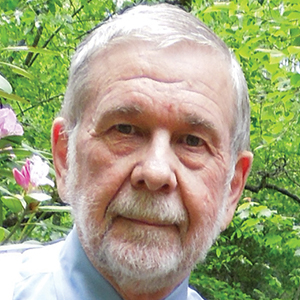Writing it right
Indexers use the title, abstract and keywords to categorize an academic paper, and these components should be created with the goal of attracting the relevant and maximal readership through search algorithms such as PubMed and Google Scholar. If someone performs research and nobody reads about it, it’s as if the scientific results were nonexistent.

The fourth edition of “The Elements of Style” by William Strunk Jr. and E.B. White has many suggestions for writing with a design that is easily understood. Strunk wrote that the reader is in serious trouble most of the time, and it is the duty of the writer to help the reader. And we have it from Francis Crick that “There is no form of prose more difficult to understand and more tedious to read than the average scientific paper.”
Here are some do’s and don’ts for writing a scientific article.
- Read the journal’s directions for the author before writing and make a checklist just before submitting the paper to make sure all criteria are fulfilled.
- The title should convey the essential points of the study.
- The title should be informative, intelligible to readers who are not specialists in the field and jargon-free.
- The titles of the most cited articles contain 10 to 15 words or 31-41 characters.
- Indexers use the title to categorize an article, and it thus serves as a keyword.
- The summary/abstract should describe the background, methods used, major findings and conclusions drawn in the manuscript.
- Avoid specialized terms in the abstract.
- Minimize the use of nonstandard abbreviations throughout the text. They slow down the reader, who must translate each abbreviation mentally before proceeding, disrupting the train of thought. Standard abbreviations such as ATP, DNA and RNA don’t have to be translated.
- Avoid abbreviations for phrases that are not onerous (for example, don’t use AD for Alzheimer’s disease).
- Use abbreviations for long phrases (for example, use PDGFR for platelet-derived growth factor receptor).
- Use keywords that target the subject matter.
- If the journal limits the number of keywords, use the maximum number allotted to maximize the potential readership without duplicating components of the title in the list of keywords.
- Keywords should not be too expansive or too selective. “Protein,” for example, may be too broad when “protein structure” or “protein folding”is closer to the point. Similarly, “cancer” might be replaced by “breast cancer” or “cancer chemotherapy” to better target the subject matter.
- The introduction should state the objectives and reasons for conducting the study and provide references to the pertinent background literature.
- The methods section should describe how the experiments were performed with enough detail that the same study could be performed in another laboratory. Often, other laboratories will replicate experiments as an entryway to extend and explore wider research objectives.
- Results should be presented clearly and concisely, usually with the aid of tables and figures.
- Tables and figures should be self-explanatory and fully understandable without reading the text.
- The text should emphasize the important points contained within the tables and figures.
- Results should be presented objectively without interpretation; interpretations are reserved for the discussion section.
- Carefully choose your references and citations; many readers consult them to gain additional scientific insight.
- If several references can be used to substantiate a statement or finding, select the ones available through open access and those that are most recent.
- Make sure the reference title matches the original publication. The reference citation in PubMed may state beta, while the original publication has the Greek β. Also follow the original paper’s use (or nonuse) of italics for such terms as in vitro and in vivo or for a gene name such as PDGFRA.
- Avoid complex sentence structures.
- Avoid monotonous presentations; write with variety to keep the reader’s interest.
- The first sentence in a paragraph is the topic sentence. Read each topic sentence sequentially from the beginning of the paper to the end to ensure that the flow of ideas makes sense.
- Adopt the Goldilocks rule for each section of the paper: not too much or too little, not too long or too short.
- Strunk devotes a special paragraph to the vile expression “the fact that,”an expression that should be “revised out of every sentence in which it occurs.”
- Revise, revise, revise. In the first half of the 20th century, before the advent of word processors, Otto Warburg — the eminent biochemist, cell physiologist and Nobel laureate (1931) — reportedly stated that he rewrote his papers up to 16 times.
White wrote, “Vigorous writing is concise. A sentence should contain no unnecessary words, a paragraph no unnecessary sentences, for the same reason that a drawing should have no unnecessary lines and a machine no unnecessary parts. This requires not that the writer make all sentences short or avoid all detail and treat subjects only in outline, but that every word tell.”
Enjoy reading ASBMB Today?
Become a member to receive the print edition four times a year and the digital edition monthly.
Learn moreFeatured jobs
from the ASBMB career center
Get the latest from ASBMB Today
Enter your email address, and we’ll send you a weekly email with recent articles, interviews and more.
Latest in Careers
Careers highlights or most popular articles

Upcoming opportunities
Calling all biochemistry and molecular biology educators! Share your teaching experiences and insights in ASBMB Today’s essay series. Submit your essay or pitch by Jan. 15, 2026.

Mapping proteins, one side chain at a time
Roland Dunbrack Jr. will receive the ASBMB DeLano Award for Computational Biosciences at the ASBMB Annual Meeting, March 7–10, just outside of Washington, D.C.

Exploring the link between lipids and longevity
Meng Wang will present her work on metabolism and aging at the ASBMB Annual Meeting, March 7-10, just outside of Washington, D.C.

Upcoming opportunities
Calling all biochemistry and molecular biology educators! Share your teaching experiences and insights in ASBMB Today’s essay series. Submit your essay or pitch by Jan. 15, 2026.

Defining a ‘crucial gatekeeper’ of lipid metabolism
George Carman receives the Herbert Tabor Research Award at the ASBMB Annual Meeting, March 7–10, just outside of Washington, D.C.

Building the blueprint to block HIV
Wesley Sundquist will present his work on the HIV capsid and revolutionary drug, Lenacapavir, at the ASBMB Annual Meeting, March 7–10, in Maryland.

